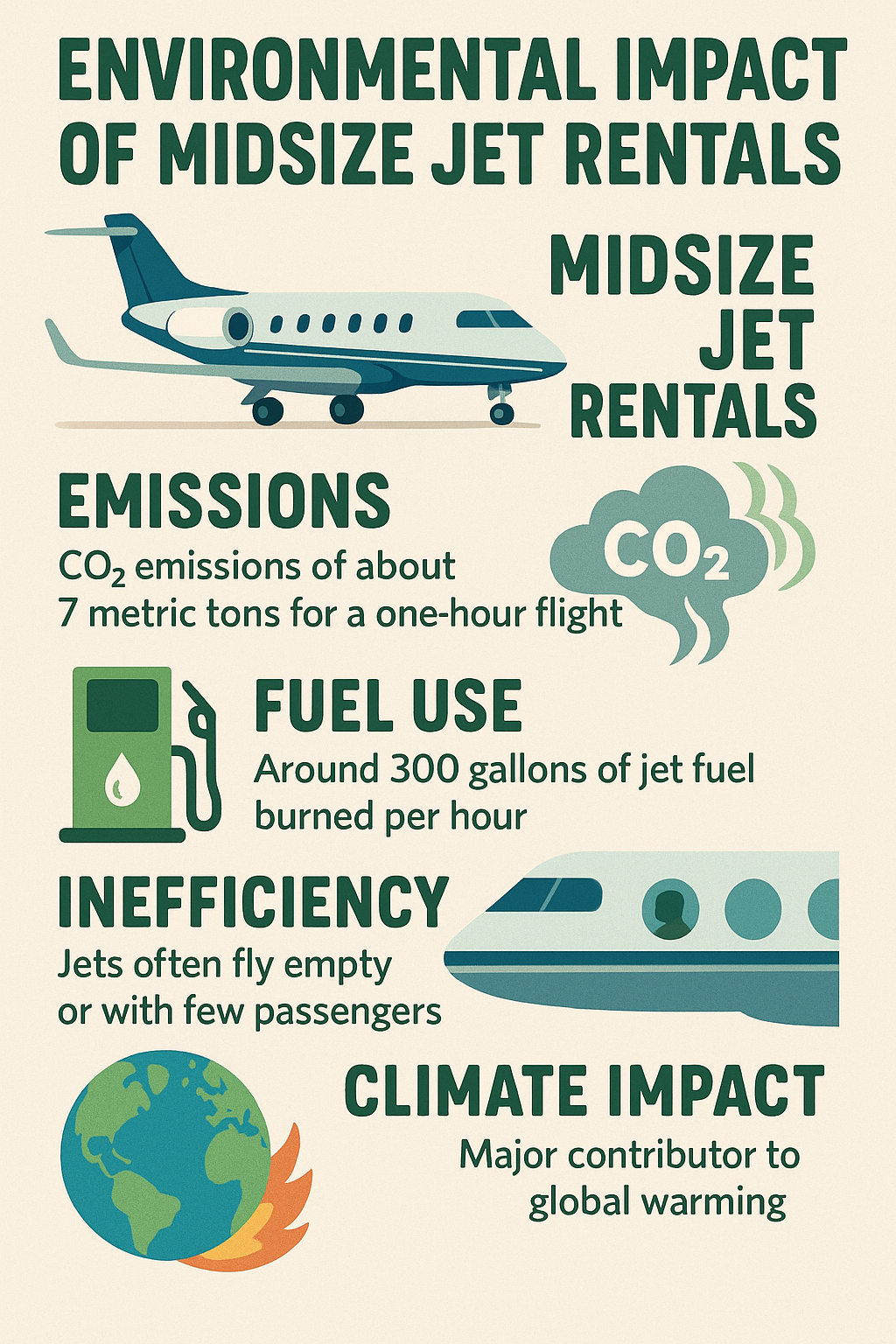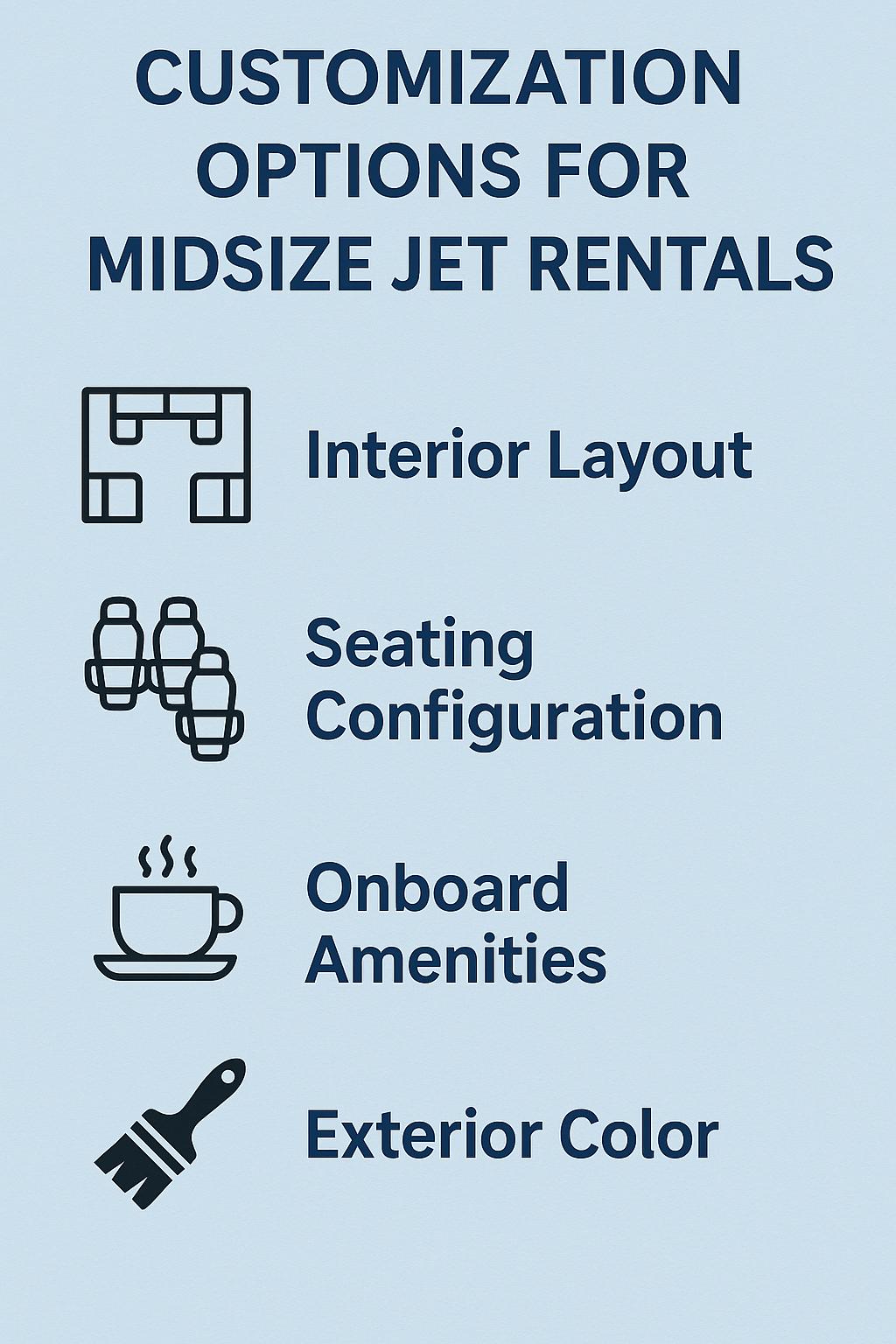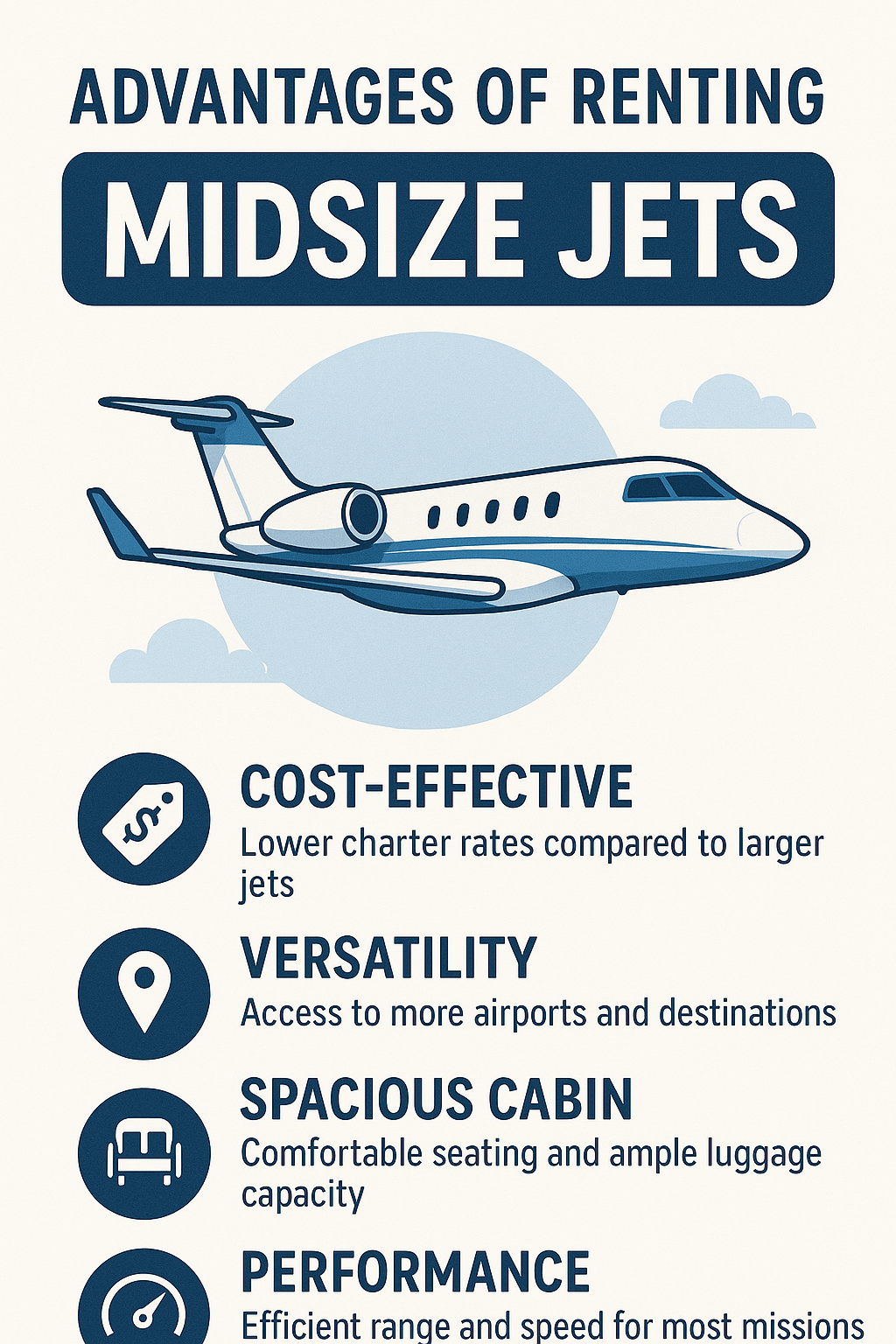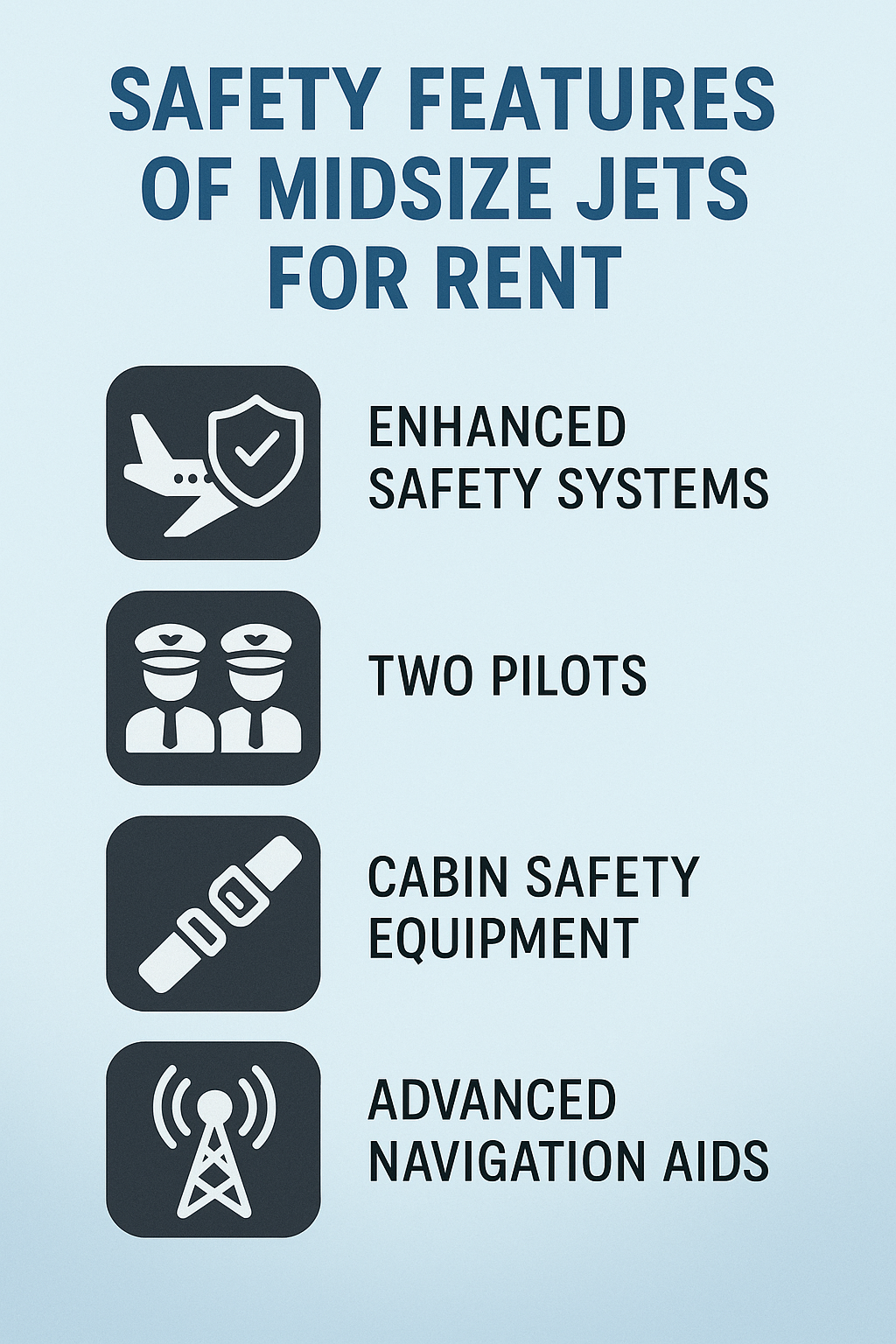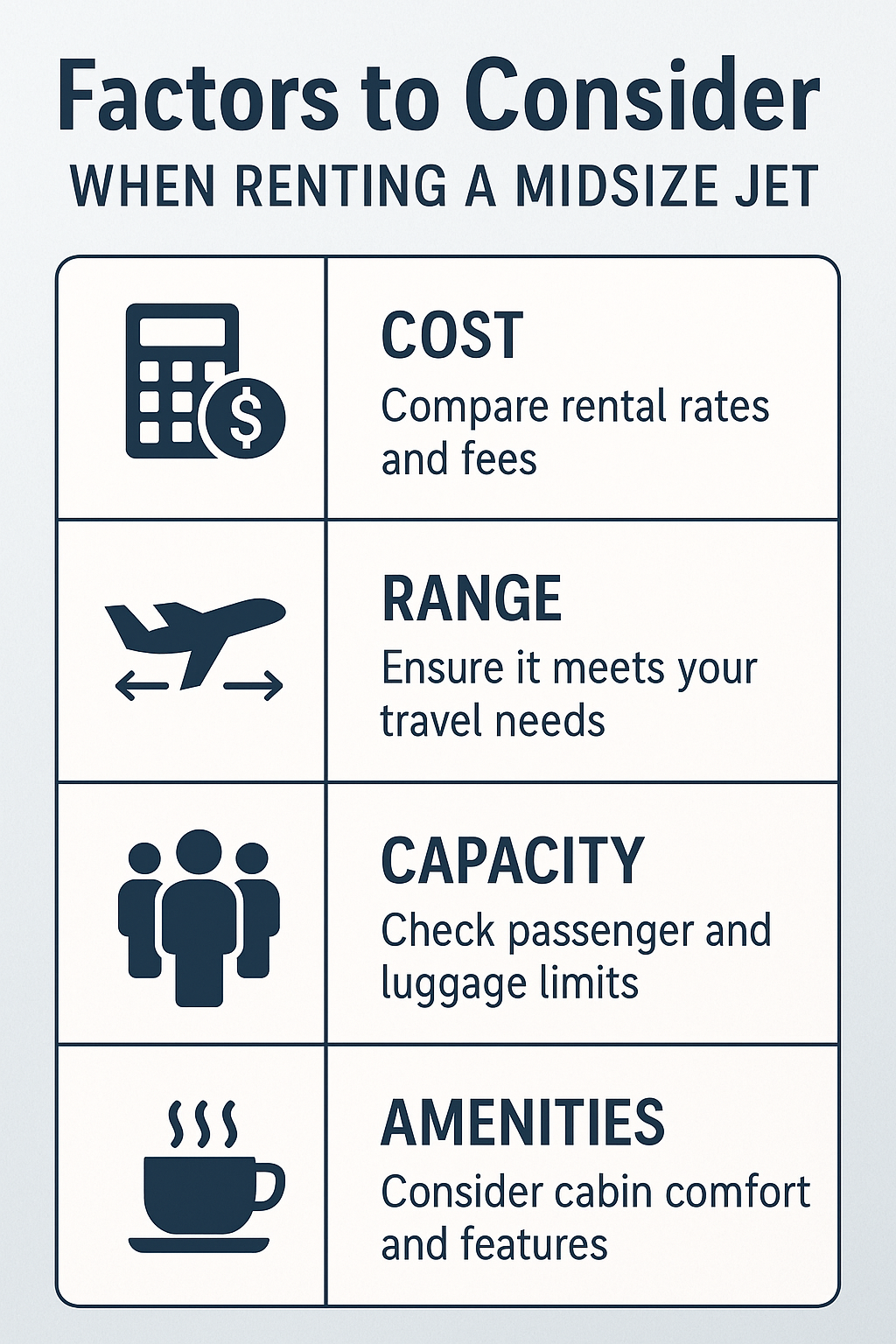Environmental Impact of Midsize Jet Rentals
Midsize jets have a notable environmental footprint. They emit between 1,000 and 2,500 kilograms of CO2 for every hour of flight. This amount is 5 to 14 times greater than the emissions from commercial flights when measured per passenger mile. Each flight from these jets releases around 3.6 tonnes of carbon. Shorter trips are especially wasteful, as they burn a lot of fuel during takeoff and landing.
Recent advancements offer hope for reducing this impact. Sustainable Aviation Fuel (SAF) can cut emissions by up to 80%. Newer engine designs also enhance fuel efficiency by about 20%. Furthermore, the aviation sector is slowly adopting carbon offset programs and exploring electric jet prototypes. These movements suggest a positive shift in making midsize jets more eco-friendly.
Key Takeaways
Midsize jets are popular among travelers who want a balance of comfort and efficiency. However, they come with a hefty environmental cost. These jets emit 5 to 14 times more carbon dioxide (CO2) per passenger mile compared to commercial flights. Each time a midsize jet takes off, it releases around 3.6 tonnes of CO2 into the atmosphere.
Since 2019, emissions from private jets have risen nearly 10% every year. This trend is especially concerning for shorter flights, which are often less fuel-efficient. When you look at the numbers, it becomes clear that these flights contribute significantly to air pollution.
On a brighter note, Sustainable Aviation Fuel (SAF) offers a way to cut carbon emissions by as much as 80%. Unfortunately, its use in private aviation is still quite limited. If more jets adopted SAF, the impact on emissions could be substantial.
Additionally, advancements in flight technology are helping to reduce fuel consumption. Optimized flight paths and newer engine designs can lower emissions by up to 20%. Every little bit helps when it comes to protecting our environment.
Another factor to consider is how many passengers are on a flight. Fully loaded midsize jets generate lower emissions per passenger mile. This means that filling the seats can make a notable difference in the overall impact on the planet.
In summary, while midsize jets offer convenience, they also pose challenges for sustainability. Understanding their environmental footprint is crucial for making informed travel choices.
Carbon Footprint Analysis of Midsize Jet Operations
Midsize jets are popular in the private aviation market, but they come with a significant environmental cost. These aircraft can release between 1,000 and 2,500 kg of CO2 every hour. On average, each flight contributes around 3.6 tonnes of carbon emissions.
To put that in perspective, that’s like several cars driving the same distance.
When a private jet takes flight, its carbon footprint equals what multiple vehicles would create traveling the same route.
A troubling trend has emerged in private jet operations. Since 2019, emissions have risen by nearly 10% each year. One of the main issues is that about 18.9% of flights travel less than 200 kilometers. These short trips create higher emissions because jets burn a lot of fuel during takeoff and landing.
On a positive note, advancements in aviation technology are helping to address these issues. New midsize jet models are designed to be more fuel-efficient, showing improvements of up to 20% over older versions.
This progress is a crucial step in making luxury air travel more sustainable and less harmful to the environment.
Sustainable Aviation Fuel: A Game-Changer for Private Aviation
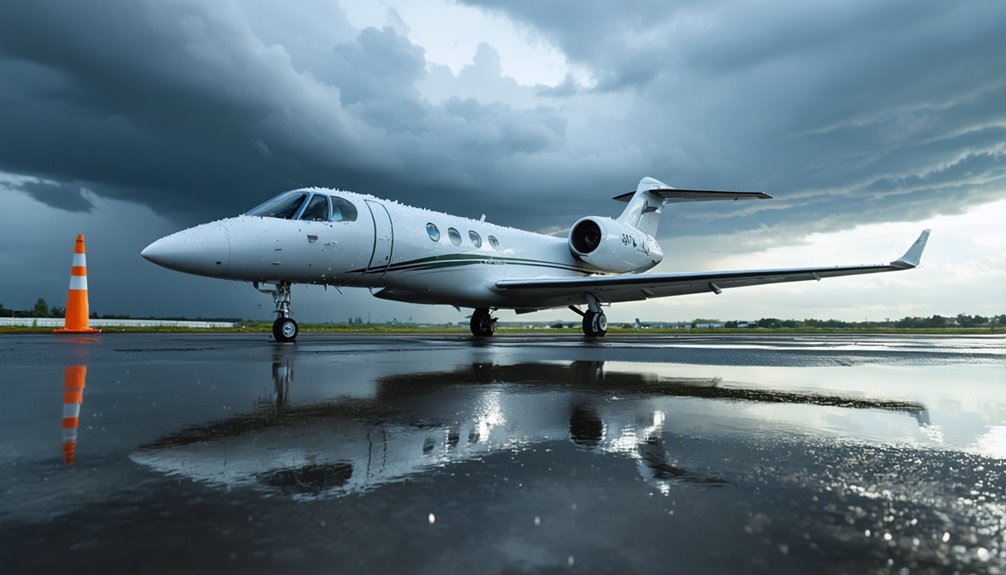
Midsize jets are a popular choice in private aviation, known for their balance of comfort and efficiency. These aircraft are spacious enough to accommodate small groups while still being cost-effective. They’re perfect for short to medium-range trips, making them ideal for business travel or family vacations.
One of the exciting developments in this area is Sustainable Aviation Fuel (SAF). It can cut carbon emissions by up to 80% when compared to traditional jet fuels. This is a big deal for the environment. SAF is made from renewable sources like waste oils and agricultural byproducts. This means it not only helps reduce pollution but also supports a circular economy.
Some leading manufacturers are already using SAF in their midsize jets. However, availability can be an issue at many airports. As more airports start to offer SAF, it will become easier for private jet travelers to choose this greener option.
Choosing SAF for your midsize jet rental is more than just flying in style. It’s a chance to be part of a significant change in private aviation. This choice helps meet ambitious goals for reducing emissions by 2050. It’s a way to enjoy the luxury of private travel while also being responsible toward the environment.
Technological Advancements Reducing Emissions in Modern Midsize Jets

Midsize jets are becoming more efficient thanks to new engine technologies. These jets now offer up to 20% better fuel performance. They also lower emissions for each passenger mile traveled.
The use of composite materials and advanced alloys is key. These materials make the aircraft lighter, which means they need less fuel for the same distance. This is a big change compared to midsize jets from just ten years ago.
Private aviation is making strides to reduce its environmental impact. With these technological advancements, midsize jets aren’t just about luxury; they also focus on sustainability.
It’s exciting to see how far they’ve come.
Engine Efficiency Breakthroughs
Midsize jets have become an appealing choice for travelers who want both comfort and a smaller environmental impact. Recent advancements in engine technology have made these aircraft much more efficient. These improvements mean that flying in a midsize jet can be more sustainable than before.
Modern engines now use up to 20% less fuel compared to older models. This means they can travel further while burning less fuel. Emissions from these jets have dropped by around 30%, which is significant for our planet. The introduction of Sustainable Aviation Fuel (SAF) can reduce carbon emissions by as much as 80%. That’s a big step toward greener travel.
Midsize jets also utilize lighter materials and enhanced aerodynamics. This design focus leads to even lower fuel consumption. Additionally, the new turbofan engines are quieter, making flights more pleasant for everyone on the ground and in the air.
Thanks to these breakthroughs, midsize jets present a responsible choice for those who prioritize both luxurious travel experiences and environmental care.
Lighter Material Innovations
Midsize jets have become a favorite in the private aviation market. These aircraft offer a great balance of comfort, space, and performance.
Modern midsize jets often feature advanced composite materials. These materials make the jets lighter, which is key for improved efficiency. Lightweight materials reduce overall weight, which means better fuel economy. Some midsize jets can achieve up to a 20% improvement in fuel efficiency compared to older models. This is a significant benefit for private travelers who want to save on costs and reduce their carbon footprint.
Aerodynamics play a crucial role in the design of these jets. The shape of the aircraft helps to minimize drag and maximize lift. This is important for making flights smoother and more enjoyable.
Additionally, newer engine designs work hand in hand with these features. They help to lower emissions while maintaining high performance.
When considering a midsize jet, travelers can expect a blend of luxury and efficiency. These jets are well-suited for both short and long journeys, offering spacious cabins and advanced technology.
As the aviation industry shifts towards sustainability, midsize jets represent a smart choice for those looking to travel responsibly.
Comparing Environmental Impact: Midsize Jets vs. Commercial Flights
When looking at midsize jets compared to commercial flights, the difference in emissions is quite striking. Private jets emit 5 to 14 times more carbon dioxide for each passenger mile traveled. This big gap is mainly due to how many people are on board. Commercial airplanes can share their environmental impact among many passengers, while midsize jets usually carry fewer travelers.
This issue is especially noticeable on shorter flights, particularly those under 500 kilometers. For these shorter distances, midsize jets are less efficient with fuel. They use more fuel relative to how far they fly, which increases their overall environmental footprint.
Midsize jets, such as the Bombardier Learjet 75 and the Embraer Legacy 500, are designed for comfort but come with a cost to the environment. While they provide a high level of service and convenience, the emissions associated with them are a concern.
On the other hand, commercial flights, like those operated by major airlines, can carry hundreds of passengers, making them a more eco-friendly choice for traveling longer distances.
Emissions Per Passenger
Midsize jets are a specific type of private aircraft that have gained popularity for their balance of size, comfort, and range. However, they come with a significant environmental cost. Each flight in a midsize jet releases about 3.6 tonnes of CO2. This number is alarming when you compare it to commercial flights. Passengers on private jets produce emissions that are 5 to 14 times higher than those flying on commercial airlines.
The emissions from private aviation have been on the rise. Between 2019 and 2023, data shows that this sector’s emissions increased by nearly 10% each year. Although private aviation makes up only about 1.7% to 1.8% of the total CO2 emissions from commercial aviation, the growing number of private flights raises serious environmental concerns.
As more people choose luxury travel, the impact on the planet becomes greater. It’s crucial to find innovative solutions that allow for comfortable travel without harming the environment. Balancing the desire for convenience and luxury with sustainability is a challenge that needs urgent attention.
Fuel Efficiency Factors
When looking at midsize jets and commercial flights, the difference in fuel efficiency stands out. Private jets often burn between 200 and 600 gallons of fuel each hour. This is much higher than commercial airplanes when you consider the number of passengers. Midsize jets can release about 3.6 tonnes of CO2 per flight.
One reason for this inefficiency is that many private flights are short, often less than 500 kilometers. These shorter journeys prevent jets from achieving the fuel efficiency that commercial airlines enjoy on longer trips.
The industry is making strides with the introduction of Sustainable Aviation Fuel (SAF). However, private aviation hasn’t kept pace with commercial airlines in using these greener options. Even though newer midsize jets come with advanced technology, their negative impact on the environment is still significant. This is largely due to having fewer passengers and the nature of their operations.
Midsize jets, like the Bombardier Learjet 75 and the Embraer Praetor 600, offer comfort and speed. But their environmental footprint is a growing concern.
As we become more aware of climate change, finding ways to make private aviation more sustainable is increasingly important.
Carbon Offset Programs for Eco-Conscious Private Jet Travelers
Midsize jets are popular for their blend of comfort and practicality. They offer a spacious cabin, making them ideal for small groups or business travel. These jets can fly longer distances than light jets, which means you can reach more destinations without needing to stop for fuel.
One standout feature of midsize jets is their range. Many can fly up to 3,000 nautical miles. This range allows for non-stop flights from cities like New York to Los Angeles or London to Dubai. With a cruising speed of around 400 knots, they provide efficient travel for those with tight schedules.
Midsize jets deliver impressive range capabilities, connecting major global cities without refueling stops—essential for today’s time-conscious travelers.
When it comes to cabin space, midsize jets typically offer room for six to eight passengers. The layout often includes a galley for refreshments and a private lavatory. This setup ensures a comfortable journey, whether for business meetings or family vacations.
Noise levels in midsize jets are generally lower than in smaller aircraft. This makes for a quieter, more enjoyable flight. Many models also feature advanced technology, such as in-flight Wi-Fi and entertainment systems, so you can stay connected or unwind during the trip.
Choosing a midsize jet for your travels combines luxury with practicality. It’s a smart choice for anyone looking to balance comfort and efficiency in the skies.
Noise Pollution Considerations in Urban Airport Areas
When thinking about the environmental impact of midsize jet rentals, noise pollution is a major issue in urban airport areas. These jets can produce sound levels over 85 decibels during takeoff and landing. This is similar to the noise from heavy traffic and can disrupt the lives of people living near flight paths.
Many local residents have reported problems due to aircraft noise. It can lead to sleep issues and higher stress levels, which are important for health and well-being. Because of this, cities are taking steps to reduce noise. Some of these measures include curfews and changing flight paths to lessen the effects on communities.
The private aviation industry is also responding. Companies are working on new engine technologies and better aerodynamic designs to lower noise levels.
If you’re considering using a midsize jet, look for companies that are investing in quieter aircraft. This choice shows a commitment to being considerate of urban environments and the people who live in them.
Empty Leg Flights: Environmental Challenges and Solutions
When we think about private jets, midsize jets stand out for their balance of comfort and efficiency. These jets offer a spacious cabin while still being nimble enough for shorter runways. Popular models like the Hawker 800XP and the Citation XLS+ provide a great blend of performance and luxury.
Midsize jets are ideal for both business and leisure travel. They typically seat six to eight passengers, making them perfect for small groups. Plus, their range allows for non-stop flights on many domestic routes. This means less time in the air and more time at your destination.
Perfect for groups of 6-8, midsize jets maximize your time with non-stop domestic flights for both business and leisure travel.
However, the environmental impact of midsize jets can’t be overlooked. While they’re more efficient than larger jets, they still contribute to carbon emissions. It’s essential to adopt green practices within the industry. For instance, choosing efficient flight paths and adopting sustainable fuels can help lessen their ecological footprint.
Industry leaders are aware of these challenges. They’re starting to implement technologies that optimize jet operations. This includes using data analytics to enhance flight scheduling and reduce empty leg flights. By focusing on these areas, we can make midsize jets not only a convenient option but also a more environmentally friendly choice.
Regulatory Framework Governing Midsize Jet Emissions
Emissions standards for midsize jets have changed a lot in the last ten years. Regulatory bodies are setting stricter rules to tackle climate issues. This puts pressure on manufacturers. They must deal with a complicated mix of regulations that differ from one region to another. This creates challenges for aircraft flying internationally.
Midsize jets, like the Bombardier Challenger 350 and the Embraer Praetor 600, must meet these evolving standards. Operators need to stay informed about varying requirements to ensure compliance.
The aviation industry has seen a worrying 46% increase in carbon emissions since 2019. This rise highlights the urgency for effective regulation and innovation in cleaner jet technologies.
With these global differences in regulations, it’s crucial for aircraft operators to understand what each rule means for their operations. Keeping up with these changes can be daunting, but it’s necessary to adapt to remain competitive and environmentally responsible.
Emissions Standards Evolution
Midsize jets are a popular choice for private air travel. They offer a balance of space, comfort, and range. These aircraft can typically seat around 6 to 8 passengers and are ideal for both short and medium-haul flights.
Midsize jets come equipped with spacious cabins. They often feature amenities like reclining seats, a galley for food preparation, and sometimes even a private lavatory. This makes them suitable for business trips or family vacations.
The range of midsize jets is impressive. They can often fly distances of about 2,500 to 3,000 nautical miles. This allows travelers to reach destinations that aren’t too far apart without needing to stop for fuel.
When it comes to performance, midsize jets usually have advanced avionics and fuel-efficient engines. This not only enhances safety but also reduces operational costs. Many models are designed to fly at high altitudes, resulting in smoother flights and better fuel consumption.
Some well-known midsize jet models include the Hawker 800XP, Citation XLS+, and the Embraer Legacy 600. Each offers unique characteristics and benefits, catering to different traveler needs.
In recent years, there’s been a push towards more sustainable options. Midsize jets are increasingly being designed with eco-friendly technologies. This includes the use of lighter materials and the integration of Sustainable Aviation Fuel (SAF), which helps to lower carbon emissions.
Global Compliance Challenges
Midsize jets are an important part of the private aviation sector. They offer a balance of range and comfort, making them popular for business trips and leisure travel. However, these jets are facing tough regulations around the world.
Private jets produce a significant amount of carbon dioxide. They account for about 1.7% to 1.8% of the CO2 emissions from commercial aviation. Each flight can generate around 3.6 tonnes of emissions. This situation is becoming more urgent as governments tighten their environmental rules.
Here’s a look at some key regions and their compliance challenges:
| Region | Key Requirement | Compliance Challenge |
|---|---|---|
| North America | 80% Sustainable Aviation Fuel (SAF) adoption | Limited supply chains |
| Europe | Stricter emissions limits | Cross-border enforcement issues |
| Asia-Pacific | Different standards | Regulatory inconsistencies |
| Middle East | New frameworks | Gaps in infrastructure |
Emissions have increased by 46% from 2019 to 2023. This rise highlights the importance of SAF in reducing the environmental impact of flying. SAF can lower carbon emissions by up to 80%. Still, using it across different regions is complicated for operators. They must navigate a web of regulations, each with its own requirements and challenges.
Midsize jets are at the forefront of this change. They are evolving to meet new standards while addressing environmental concerns. The aviation industry must work together to ensure compliance and promote sustainability.
Optimizing Flight Routes for Reduced Fuel Consumption
When midsize jet operators choose their flight routes, they make a big difference in cutting fuel use and helping the environment. Optimizing flight paths can reduce carbon emissions by as much as 20%, all while sticking to schedules.
Modern planning uses several tools. Real-time weather data helps pilots avoid strong headwinds. Air traffic updates prevent unnecessary holding patterns that waste fuel. Optimized climb and descent profiles ensure the jet uses fuel efficiently. Electric taxiing systems cut down on fuel use while on the ground. Custom route algorithms help to reduce total air miles traveled.
Midsize jets, known for their balance of space and efficiency, benefit greatly from these strategies. They’re designed to carry up to 9 passengers comfortably and can fly distances of about 3,000 miles. This makes them ideal for short to medium-haul trips, connecting business travelers to important destinations.
The Role of Passenger Capacity in Environmental Efficiency
Midsize jets play a significant role in private aviation, especially when it comes to their passenger capacity. The way these jets utilize their seats affects their environmental impact. For instance, when I book a midsize jet that accommodates 6-10 passengers, the emissions per passenger mile decrease significantly compared to smaller aircraft with limited seating. This is important because private jets can be 5 to 14 times more polluting than commercial flights.
On a typical 90-minute flight, a midsize jet can produce around 3.6 tonnes of CO2. However, if the jet is fully loaded, this means each passenger’s share of emissions is much lower. By maximizing the number of passengers, I can greatly lessen the environmental footprint of the flight.
Fully loading a midsize jet distributes emissions, turning private aviation from an environmental liability into a more sustainable option.
I’m also looking into Sustainable Aviation Fuel (SAF). This type of fuel can reduce carbon emissions by as much as 80%. Pairing full passenger loads with thoughtful scheduling and route planning minimizes empty leg flights, which are flights without passengers returning to base.
This approach enhances the overall environmental efficiency of midsize jets.
Electric and Hybrid Midsize Jets: The Green Future of Private Aviation
Midsize jets are becoming a popular choice in private aviation. They offer a balance of space, comfort, and range, making them ideal for both business and leisure travelers. Electric and hybrid midsize jets stand out in this category, promising to significantly lower the environmental impact of flying.
Manufacturers are exploring new propulsion systems. These systems could cut emissions by up to 80% when combined with Sustainable Aviation Fuel (SAF). This is a big deal for the industry. Advanced electric technologies boost fuel efficiency during flights. Hybrid engines also help reduce the carbon footprint of jet rental services, which is crucial as travelers become more eco-conscious.
The future looks bright for these sustainable aircraft. Commercial viability is on the horizon, making it easier for operators to meet strict emissions standards. As regulations tighten, electric and hybrid jets can help meet these challenges. Reducing carbon output aligns with global sustainability goals, making these jets more appealing to eco-minded consumers.
This shift is about more than just being green. It’s reshaping private aviation. The move towards electric and hybrid technologies isn’t just a trend; it’s a necessary change for the industry.
Private flyers can expect the same luxury and convenience, but now with a focus on environmental responsibility. Midsize jets are leading the way in this exciting evolution.
Best Practices for Environmentally Responsible Jet Chartering
If you want to reduce your environmental impact while flying on midsize jets, there are several effective practices to consider.
One way to do this is by participating in carbon offset programs. These programs support projects that aim to reduce carbon dioxide emissions, helping to balance out the emissions from your flight.
Choosing operators that use Sustainable Aviation Fuel (SAF) is another important step. SAF is made from renewable resources and can significantly lower greenhouse gas emissions compared to traditional jet fuel.
Efficient flight planning is also crucial. Minimizing empty legs—flights that go without passengers—can reduce unnecessary fuel consumption.
Carbon Offset Programs
Midsize jets are popular for their balance of space and efficiency. They provide comfort for passengers while remaining more economical than larger jets. These aircraft typically seat 6 to 8 people, making them ideal for business trips or family vacations.
One significant advantage of midsize jets is their versatility. They can fly longer distances than light jets, which opens up more travel options. For instance, a midsize jet can easily reach destinations like New York to Los Angeles without needing a stop. This capability makes them a preferred choice for many travelers.
When it comes to environmental impact, midsize jets face scrutiny. Their carbon emissions can be substantial. However, many operators are now adopting carbon offset programs. These initiatives help mitigate the environmental effects by supporting projects like reforestation and renewable energy. Passengers can even choose to participate in these programs when booking their flights.
Combining these offset programs with Sustainable Aviation Fuel (SAF) is another way to reduce emissions. SAF can lower carbon output by up to 80%. This is an encouraging step for those who care about sustainability.
As more midsize jet operators adopt these eco-friendly practices, the industry is seeing a shift. Companies that prioritize sustainability may attract eco-conscious travelers. This trend shows that private aviation can evolve while maintaining the convenience and luxury that clients expect.
Efficient Flight Planning
Midsize jets offer a balanced solution for private aviation, combining comfort with efficiency. These aircraft are well-suited for both short and medium-haul flights, making them a popular choice among travelers. Their spacious cabins provide a comfortable environment for passengers, often equipped with amenities such as full-service galleys and multiple seating configurations.
When it comes to environmental responsibility, midsize jets can be optimized for lower fuel consumption. For instance, many models feature advanced engines that are designed to be more fuel-efficient. This can lead to a notable decrease in emissions, making them a greener option in the private jet market.
| Feature | Advantage | Environmental Impact |
|---|---|---|
| Spacious cabin | Comfort for passengers | Enhanced flying experience |
| Advanced engines | Fuel efficiency | Reduced carbon footprint |
| Versatile range | Flexibility in travel | Optimized routes for emissions |
Midsize jets can also benefit from innovative technologies. For example, some newer models integrate systems for electric taxiing, which minimizes fuel use during ground operations. This innovation contributes to lower overall emissions and aligns with the industry’s push for sustainability.
In addition, flying during off-peak hours can enhance efficiency. Less air traffic allows for smoother flights and shorter travel times. Combining these strategies leads to a better experience for passengers while also being mindful of the environment.
Understanding the benefits of midsize jets helps travelers make informed choices. They not only provide a convenient and comfortable way to fly but also offer opportunities to reduce environmental impact.
Sustainable Fuel Options
Midsize jets are a popular choice for private aviation, offering a balance of comfort and efficiency. With more travelers looking for eco-friendly options, sustainable aviation fuel (SAF) is gaining traction in this segment. SAF can cut carbon emissions by up to 80% compared to traditional jet fuels. This is a game changer for those who want to travel luxuriously while being mindful of the environment.
Many airports around the world are starting to supply SAF, making it easier for jet operators to adopt this green fuel. Leading companies in the industry aren’t only using SAF, but they’re also investing in carbon offset programs. These initiatives help to further reduce their environmental impact.
Midsize jets are becoming more fuel-efficient too. New designs focus on minimizing fuel use while maximizing passenger comfort. Operators are also looking at flight routes to cut down on unnecessary fuel consumption. This means that travelers can get to their destinations faster and with less impact on the planet.
Efforts to reduce empty leg flights are also important. By planning strategically, operators can ensure that jets are flying with passengers more often. This boosts overall efficiency and reduces wasted capacity.
The shift toward sustainability in midsize jets isn’t just a trend. It’s becoming the norm in the industry. As more companies invest in fuel-efficient aircraft and sustainable practices, the carbon footprint of private aviation is shrinking. Travelers can enjoy the luxury experience of private flying without compromising their values.
The Economic-Environmental Balance of Midsize Jet Travel
Midsize jets are an important part of private aviation. They offer a unique blend of comfort, range, and cost-effectiveness. As people and businesses consider their travel options, the environmental impact of flying is becoming a major topic. Since 2019, emissions from private aviation have surged by 46%. This raises serious concerns about sustainability in the industry.
Here’s a breakdown of what midsize jets bring to the table:
| Economic Factor | Environmental Cost | Balanced Solution |
|---|---|---|
| Time Efficiency | 3.6 tonnes CO2 per flight | Carbon offset programs |
| Business Flexibility | 10% annual emissions rise | Sustainable Aviation Fuel (SAF) |
| Global Accessibility | Higher emissions per passenger | Optimized flight planning |
| Productivity Gains | Average flight distance of 865.7 km | Investment in electric and hybrid technology |
Midsize jets can be a great choice for many travelers. They allow for quick travel and business opportunities. However, their carbon footprint is a concern. A solution lies in the use of Sustainable Aviation Fuel (SAF) and carbon offset programs. These strategies are particularly effective for shorter flights, about 50% of which are under 500 kilometers.
Investing in cleaner technologies, like electric and hybrid jets, can further help reduce emissions. Midsize jets can balance economic benefits with environmental responsibility through thoughtful choices and innovative solutions. This approach may pave the way for a more sustainable future in private aviation.
Case Studies: Successful Green Initiatives in Private Aviation
Private jets come in various sizes, each serving different needs. Midsize jets stand out for their balance of comfort and efficiency. They offer more space than light jets, while still being nimble enough for shorter runways.
Midsize jets, like the Hawker 800XP and the Citation XLS, are popular among business travelers. They can fly transcontinental distances and carry up to eight passengers comfortably. The cabin space is designed for productivity, with amenities that include Wi-Fi and conference tables.
One major advantage of midsize jets is fuel efficiency. Companies have made strides in reducing their environmental impact. For example, many operators have begun using sustainable aviation fuel (SAF). This cleaner fuel can cut carbon emissions significantly.
Midsize jets are also equipped with advanced avionics. These systems help optimize flight paths, which leads to lower fuel consumption. The result is a more eco-friendly travel option for those who want both luxury and responsibility.
The demand for these jets continues to grow. Travelers appreciate the versatility they offer. Whether for business or leisure, midsize jets are a smart choice in the private aviation market.
Frequently Asked Questions
How Much Does a Private Jet Impact the Environment?
Midsize jets are a popular choice among private aviation. They offer a balance of comfort and range. These aircraft can carry a good number of passengers while still providing a spacious cabin. Midsize jets typically have a range of about 2,500 to 3,500 miles, making them ideal for medium-length trips.
When it comes to fuel consumption, midsize jets do use a significant amount of jet fuel. They tend to have higher emissions per passenger compared to commercial flights. For instance, a midsize jet can emit roughly 2-3 times more carbon dioxide per passenger than a commercial airliner, depending on the distance traveled. This means that while they are convenient, they come with an environmental cost.
Many companies are looking at carbon offset programs. These programs allow jet owners to invest in environmental projects to counterbalance their emissions. Midsize jets can also benefit from sustainable aviation fuels (SAFs). SAFs are made from renewable resources and can significantly reduce emissions. The aviation industry is moving toward these greener alternatives as regulations become stricter.
How Much CO2 Does a Private Jet Emit Compared to a Car?
Midsize private jets are known for their efficiency in the skies. However, they come with a significant environmental cost. A typical midsize jet emits around 3.6 tonnes of CO2 for each flight. In contrast, an average car emits that amount over several months of regular driving.
This stark difference raises important questions about travel efficiency. When you think about environmental impact, private jets seem less sustainable compared to standard vehicles. Even though cars vary in fuel efficiency, the carbon footprint from private jets is considerably larger.
The aviation industry faces growing scrutiny regarding emissions. Midsize jets, while popular for their speed and comfort, contribute to this issue. As travelers become more environmentally aware, the conversation around the use of private aircraft is changing. Understanding these differences helps inform choices about travel methods.
What Are the Environmental Impacts of the Aviation Industry?
Midsize jets are a popular choice for private aviation. They offer a good balance of range, speed, and comfort. These jets typically seat around 6 to 9 passengers, making them ideal for small groups traveling for business or leisure.
One example of a midsize jet is the Hawker 800XP. This aircraft is known for its spacious cabin and impressive performance. It can fly distances of over 2,600 nautical miles, allowing for non-stop travel between major cities. Another notable midsize jet is the Citation XLS+, which combines efficiency and luxury. It features a modern interior and can reach speeds of up to 500 knots.
Midsize jets also provide flexibility. They can access smaller airports that larger commercial planes can’t reach. This means travelers can land closer to their final destination, saving time and hassle.
When considering a midsize jet, it’s essential to understand the operating costs. Fuel consumption, maintenance, and crew salaries all contribute to overall expenses. Buyers should evaluate these factors to ensure they make a sound investment.
Which Private Jet Is the Least Polluting?
For eco-friendly travel, consider the Bombardier Learjet 75 Liberty or Embraer Praetor 500. These midsize jets stand out for their low emissions and advanced green technologies. They can utilize sustainable aviation fuel (SAF), which reduces their environmental impact.
The Bombardier Learjet 75 Liberty offers a spacious cabin and impressive range. It’s designed for comfort while being mindful of the planet. On the other hand, the Embraer Praetor 500 combines performance with efficiency. Its sleek design and innovative systems make it a smart choice for eco-conscious travelers.
Both jets lead the way in sustainable aviation. They represent a growing trend in the industry towards greener alternatives. As more private jet manufacturers adopt such technologies, the future of air travel looks promising for those who care about the environment.
Conclusion
Midsize jets are a popular choice in private aviation. They offer a balance of comfort and performance, making them suitable for various travel needs. However, they also have a significant environmental impact.
The private aviation industry is changing. Sustainable Aviation Fuel (SAF) is becoming more common. This fuel can reduce greenhouse gas emissions compared to traditional jet fuel. Carbon offset programs allow travelers to invest in projects that help balance out their flight emissions. Emerging electric technologies promise to further decrease the carbon footprint of air travel.
Responsible chartering is key. When people choose to use midsize jets wisely, they can help make flying more sustainable. By focusing on these innovative solutions, private aviation can become a greener travel option for everyone.
